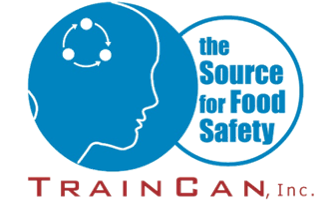U of G food technology revolutionizes food safety
Article By Barbara Latkowski Published May 20, 2025
Article Source: https://www.guelphtoday.com/grounded/u-of-g-food-technology-revolutionizes-food-safety-10667003
Food recalls have marched steadily upward in the past few years.
This increase can be attributed to recurring contamination problems that have resulted in a growing number of outbreaks of E. coli, listeria and salmonella.
Instead of using conventional solutions such as chemical washing, pesticides or electrolyzed water, Keith Warriner, a professor in the department of food science at the University of Guelph, has developed a technology that leaves no toxins behind.
“There are so many food recalls now. The reality is the diagnostics got so good, you can't hide. They will trace it to you. So, we find that companies are now becoming much more open to this technology,” Warriner said.
The technology, a prototype of hydrogen peroxide, UV light and ozone, is unlike other conventional solutions such as chemical washing, pesticides or electrolyzed water.
When combined, these ingredients create hydroxyl radicals, energetic particles that break apart carbon chains and destroy 99.99 per cent of pathogens, such as e. coli, salmonella and Norovirus in less than 30 seconds.
“It’s very clean,” Warriner said. “It does its job, then it dissipates into water vapour and oxygen.”
The idea first came to Warriner before he came to Canada from the UK in the 90s.
“This is when contaminated fresh food produce really came to the forefront. We had big outbreaks with sprouts and melon. Back in the UK, we found that washing doesn’t do that much. If anything, it cross contaminates. So we came up with this process,” Warriner said.
Fast forward to 2015, Paul Moyer, an Ontario apple grower, approached Warriner after an outbreak of listeria in caramel apples which resulted in massive recalls, and ultimately, caused dozens of infections, hospitalizations and deaths.
“Retailers said every candy apple is off the market. And so Paul Moyer was on the brink of collapse, even though it wasn’t his outbreak. It was in California,” Warriner said.
“I met with Paul, explained our process, and we did a project together. We found a solution for the candy apple contamination. And then it expanded. He became the number one candy apple maker. It was a perfect success story.”
Moyer then went on to suggest the project be commercialized through Clean Works Technology, his company that partly owns the patent of Warriner's tech.
“This unit is out there now. We have one not only in Guelph, but in Montreal and Vancouver,” Warriner said.
“The first one used for meat will be installed in the near future. So, it is expanding.”
The technology has won several awards, including U of G’s Innovation of the Year, IAFP Innovation of the Year and the Premier’s Awards for Agri-Food Innovation Excellence.
According to Warriner, the technology can decontaminate 100,000 lbs. of produce per hour. It does not use water and is sustainable.
It works on fruits, vegetables, raw pet food, as well as on products such as nuts, flour and frozen products, which will defrost during a typical wash.
It is mobile, able to attach harvesters on the field in order to decontaminate low-growing crops, like spinach or broccoli, without the use of pesticides.
Warriner said this technology is also an easy fit for indoor farms, in which crops in controlled growing environments are sensitive to quality issues when typical water-based cleaning methods are used.
“It's even used for decontaminating eggs. We did a trial with it, gave it to a hatchery, for about 20,000 eggs, and they said this is a magic treatment because it improves the seven day mortality rate with an increase of over 60 per cent. More chicks survived,” Warriner said.
The technology works even on non-food items, such as personal protective equipment (PPE).
During the COVID-19 pandemic, Warriner’s technology helped to sanitize and recycle up to 800 masks an hour.
Today, Warriner, along with U of G food science students, research ways to improve the technology and to ensure its efficacy on food products.
Working with Vineland Research and Innovation Centre and the University of Delaware, Warriner and his students’ research has been funded for more than 10 years by the Ontario Agri-Food Innovation Alliance, a collaboration between U of G, the Government of Ontario and its agency Agricultural Research and Innovation Ontario.
Recent testing was done to treat wine grapes affected by powdery mildew, a disease resistant to fungicides that destroys crops in the Niagara region.
Warriner believes the technology could also be used in the fight against avian flu, something he is currently investigating.
A continued challenge for Warriner is to convince people to buy into the idea, and to be more proactive when it comes to food safety.
“When this came to Canada, we worked on all kinds of things from lettuce, cauliflower and broccoli. But when we went to industries, we received a blank stare.”
Today, more than 200 studies validate the technology’s safety and efficacy.
“We are finding that it is now being accepted,” he said. “It’s just getting over those barriers of adoption.”
This story was made possible by our Community Leaders Program partner.
Thank you to Terra View Custom Homes for helping to expand local news coverage in Guelph. Learn more
